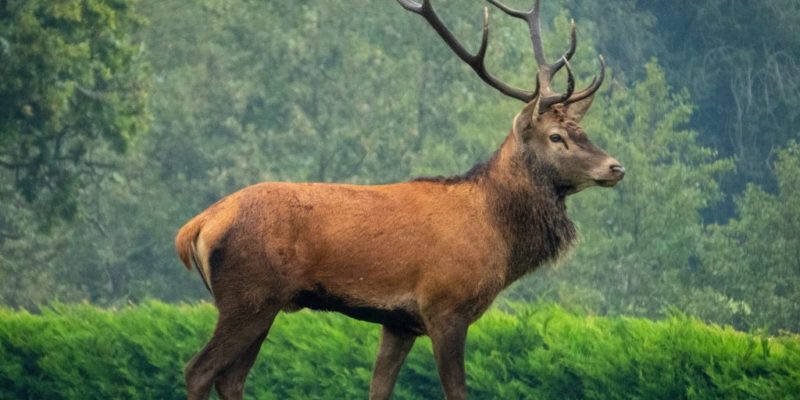Yellowstone National Park is known worldwide for the wildlife and natural wonders it contains. Photographers wait for hours to get the perfect photograph of anything they can find. If you find yourself in the northwestern United States, why not hop onto a Salt Lake Express bus to West Yellowstone and learn why?
Here is a short list of some of the wildlife you can see!
The Gray Wolf
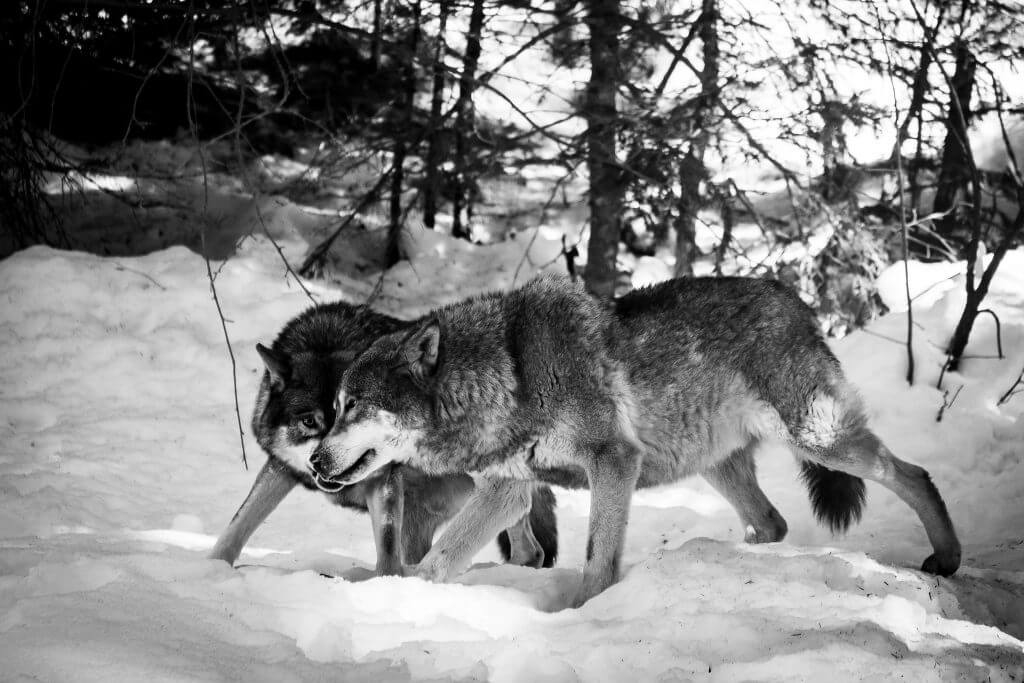
The gray wolf, also known as the Timber Wolf, is on the endangered species list. Though they once roamed through about two thirds of the United States, they only have populations in seven states now. Gray wolves typically weigh between 60 and 145 pounds, with size varying by gender. Females are usually smaller. They are generally about 5-7 feet long from nose to tail (the tail is usually about 2 feet long) and move in packs of up to 15 members! To learn more about gray wolves, you can visit the National Wildlife Federation’s Website.
The Grizzly Bear
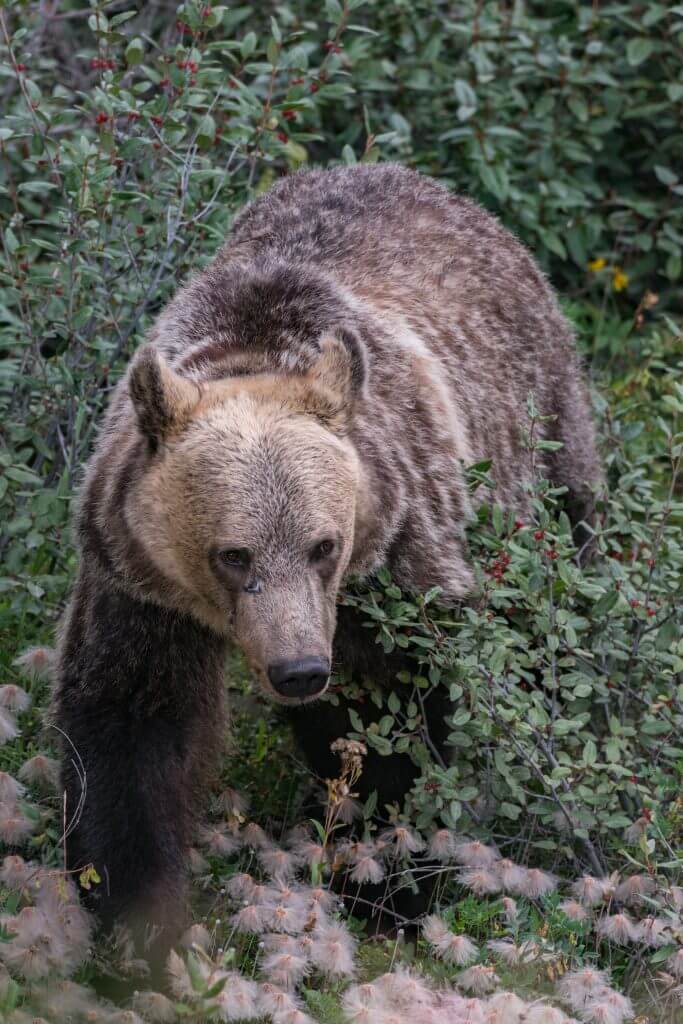
The Grizzly Bear is a type of brown bear. They actually come in a wide variety of colors ranging from almost white to a dark brown. One of their more distinguishing features is the hump on their shoulders, which is where muscle connects to their backbone. Females can reach up to 800lbs while males can reach up to 1700lbs. Apparently the term “Grizzly Bear” originated because during the colder months they can be seen with the tips of their fur coated in ice. This can give them a “grizzled” or gray look. Learn more here!
The Mountain Lion
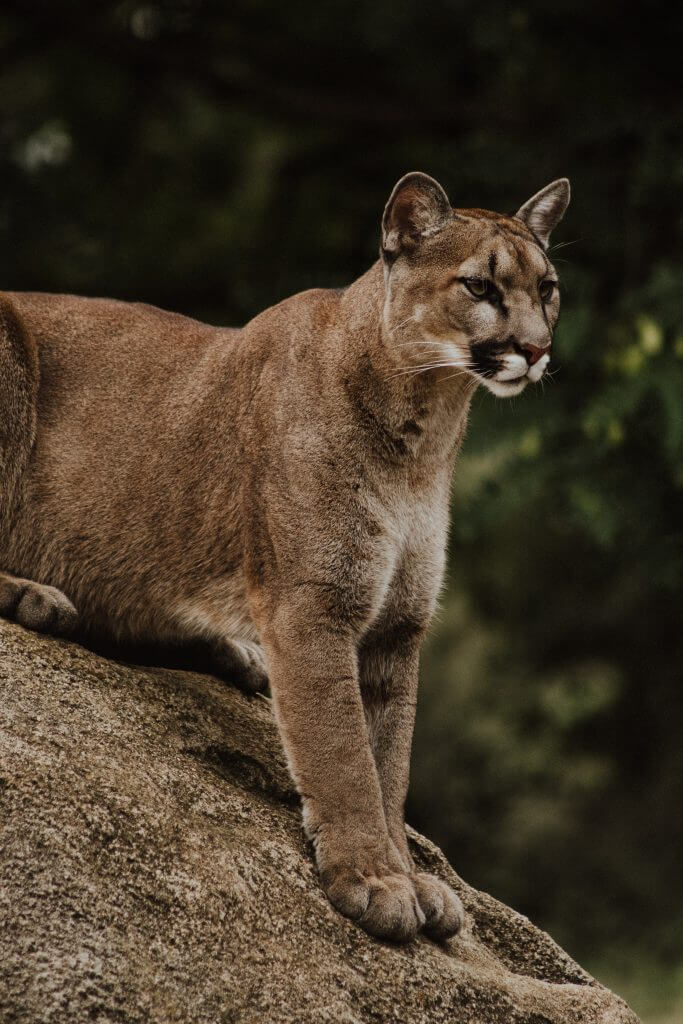
The Mountain Lion has many names. Some of the common ones are Puma, Panther and Cougar. They are located all throughout the Americas, and where they live has a profound influence on their size! Near the equator, they are much smaller, and the further north you go the larger they get. Smaller cats weigh between 64 and 115 pounds and larger cats can reach 141-220 pounds depending on gender. They are solitary creatures with wide ranges, living wherever food and shelter can be found. If you are interested, you can learn more here.
Red Fox
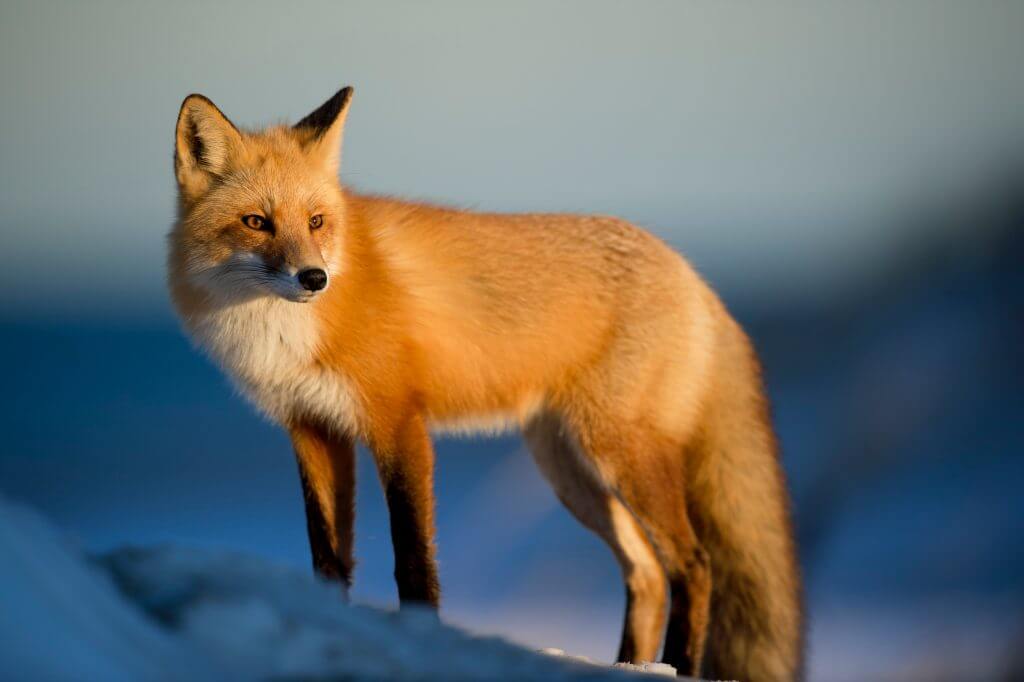
Red Foxes typically have red fur, with white fur across their bellies and chest. They can have gray patches, however, which sometimes causes them to be mistaken for their cousin the gray fox. The best way to tell the difference is to check the tail: gray foxes have a black tipped tails and red foxes have white tipped tails. Red foxes prefer to eat rabbits and mice, but are efficient scavengers when necessary. Their hearing is so good they can hear mice and other rodents digging underground! Click here to learn more!
Coyote
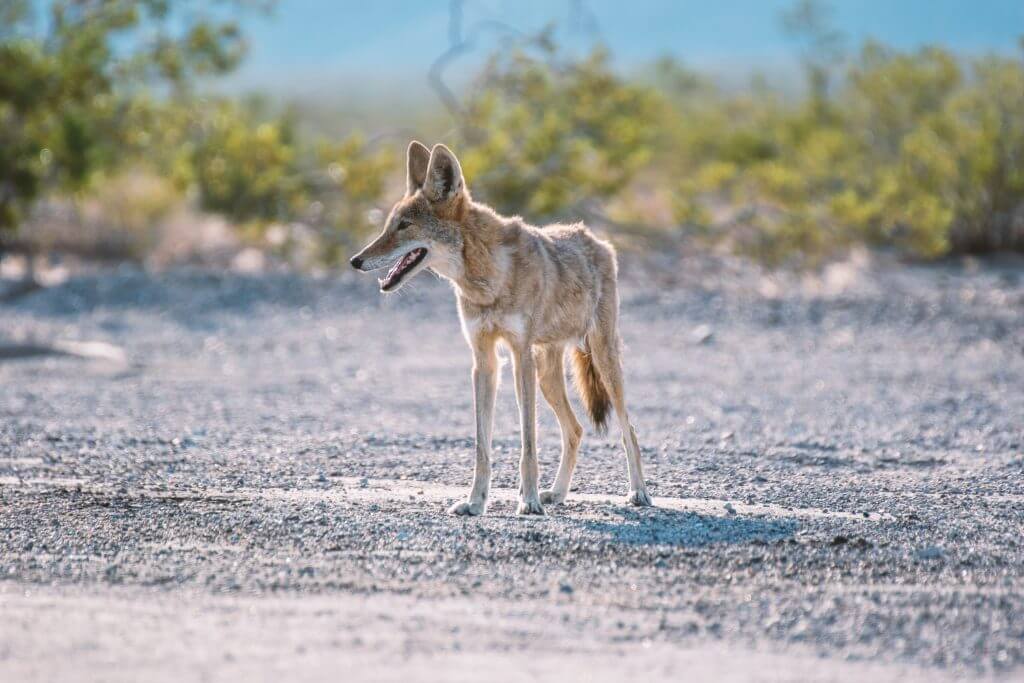
Coyotes are close cousins to wolves and are some of the most common wild canines in North America. They are rated as being of least concern by the International Union for Conservation of Nature. Coyotes weigh between 15 and 44 pounds, and mostly feed on bison, deer, moose, elk and other large herbivores, though they will hunt and eat smaller game when they can. They have been known to stalk and attack humans from time to time, though this has only resulted in 2 known deaths and 130 injuries in the last 30 years, mostly in California where humans are encroaching on their habitat.
River Otter
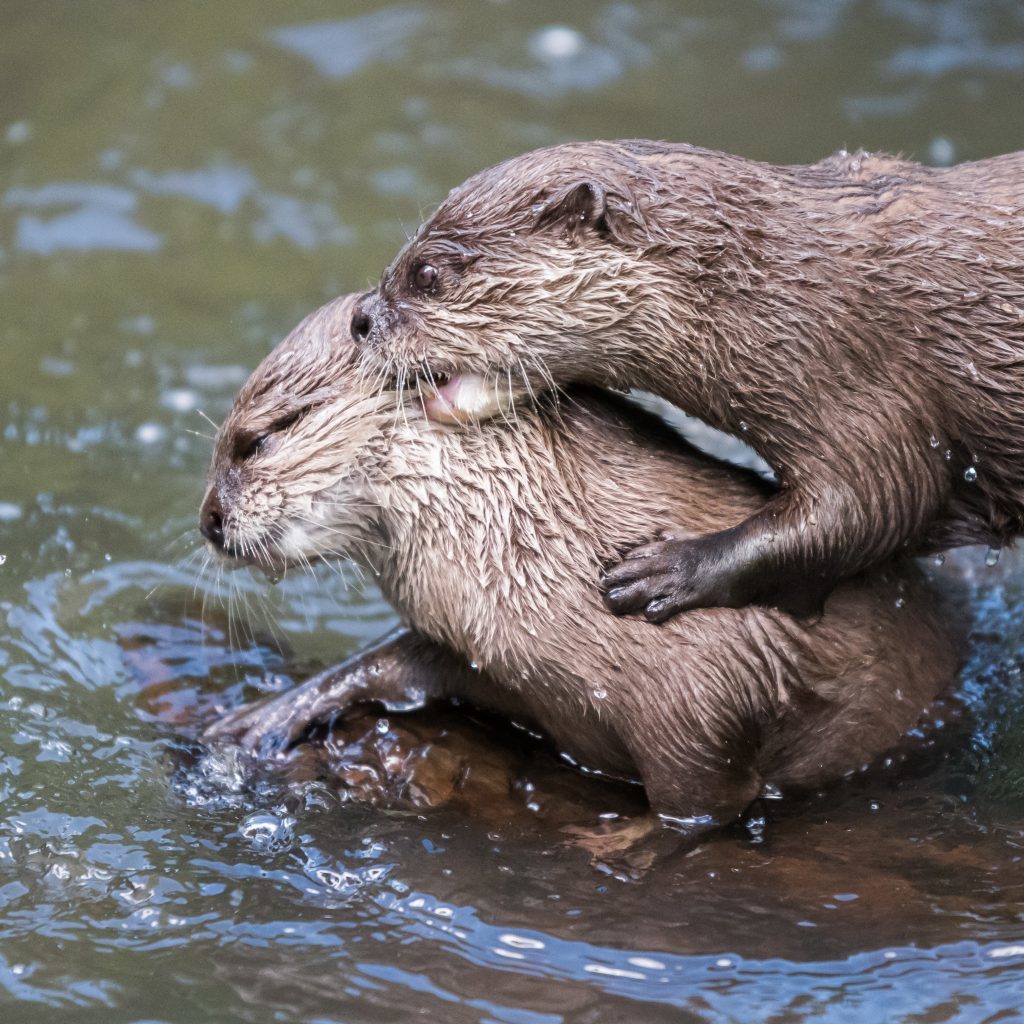
River otters are highly social, playful animals. They live in families, usually a female and her offspring, or a group of males. Otters like to eat fish, which they hunt by hiding and ambushing them. They also eat insects, birds and some frogs and lizards. Otters have have few water predators, but on land they are hunted by everything from bobcats to grizzly bears. They are not considered endangered or at risk. If you want to know more about otters, here is a good place to start.
American Buffalo
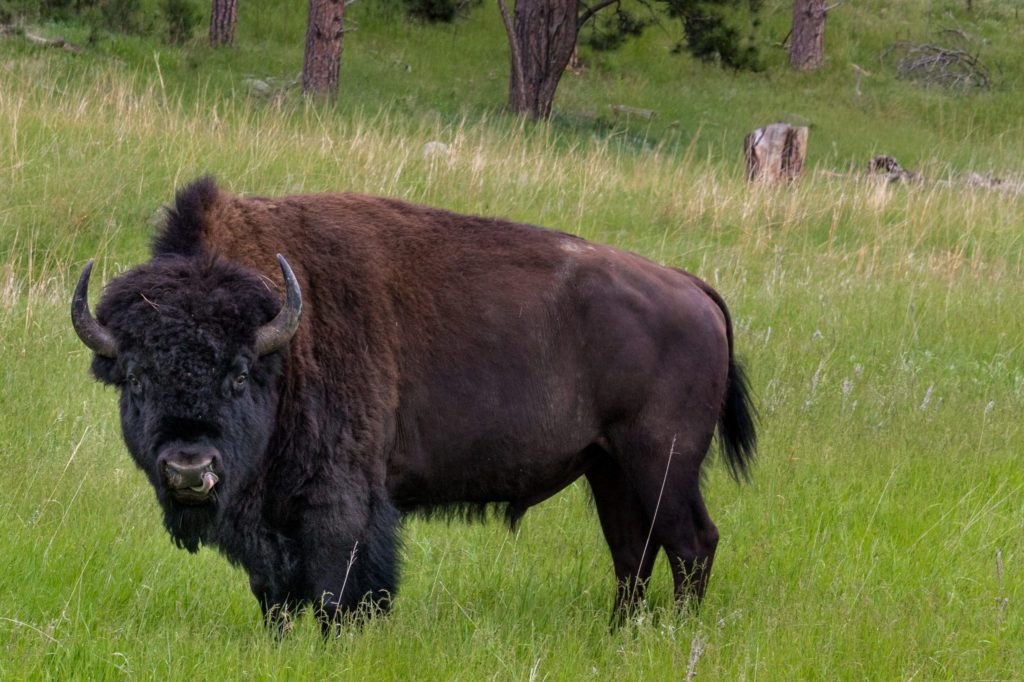
American Buffalo are commonly called Bison. They can stand up to 6 feet tall and weigh upwards of 900 pounds. They live about 20 years when not raised in captivity, that’s why we love seeing them free in Yellowstone. Bison are identifiable by the hump on their back and their shaggy brown fur, They often grow beards and and the fur on their front is longer than the fur towards their rump. The eat constantly, and often do so even while on the move. Find more information about Bison here.
Yellowstone Elk
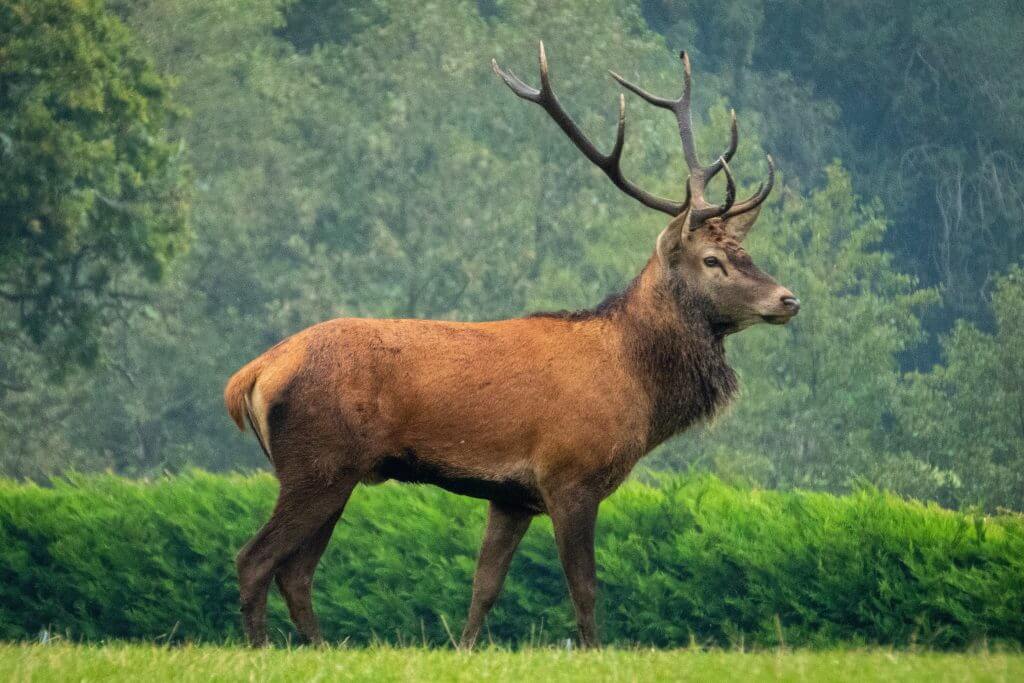
There are between 10,000 and 20,000 Elk in Yellowstone at any given time. They are the most populous hooved animal in the park. Each elk weighs between 500 and 700 pounds. Males grow antlers which have on average 6 tines or points. They use them to establish dominance over other males during mating, or “rutting”, season. The word elk originated with European settlers. The closest thing they had seen to an elk was a Moose, and so they used their name for moose. European still use the term Elk to refer to Moose, and this causes some confusion among European visitors.
Moose
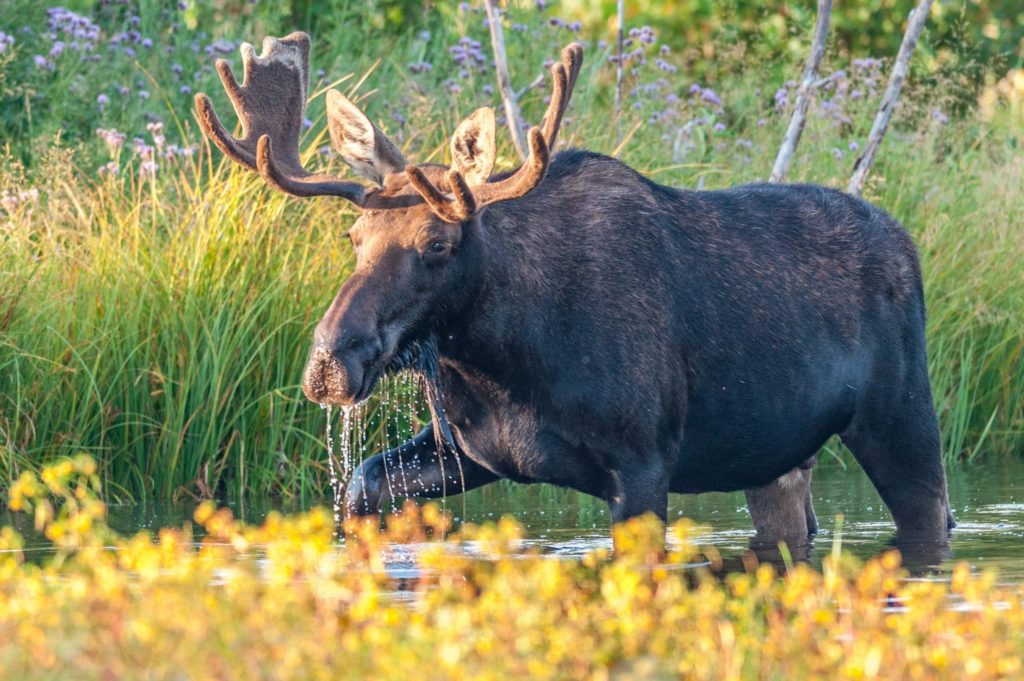
Moose are the largest members of the deer family. They stand 6 feet tall and weigh up to 1,000 pounds. Because Moose are so tall, they have a hard time bending over to eat grass. Instead, they eat twigs and leaves. The word “moose” was the Algonquin word meaning “eaters of twigs”. Interestingly, each of their hairs is hollow, which allows the them to act as insulation in the winter. Unlike females, males grow horns in the spring for use during mating season in the fall. The antlers can grow to up to 6 feet and are used to fight other bulls for territory or mates. To find out more about moose in Yellowstone, go here!
Bighorn Sheep
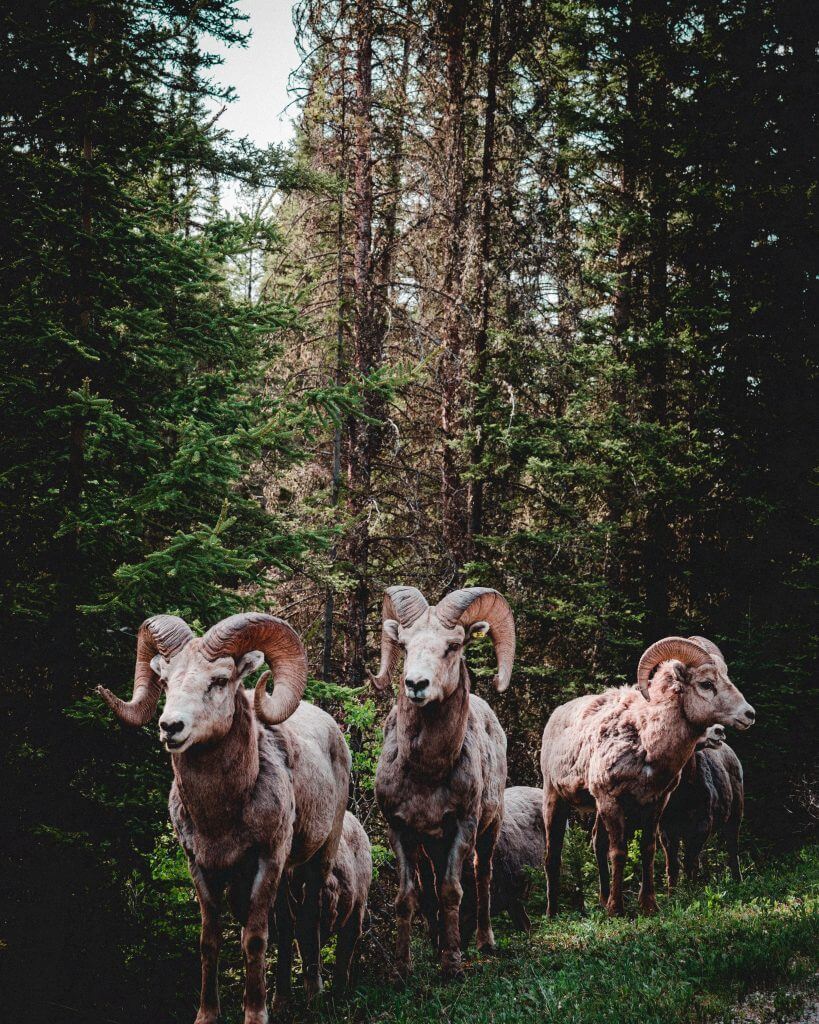
Bighorn Sheep are compact animals, with thickly bunched musculature. They are well adapted to living in steep places such as slopes and mountainsides. Typically, bighorn sheep are white and males can be distinguished by their large curved horns, which weigh up to 30 pounds. They can weigh between 160 and 350 pounds, and stand around 40 inches (3′ 4″) high. They have been on the endangered species list, but made a recovery. There are still efforts to continue protecting them. Read here for more.
Mule Deer
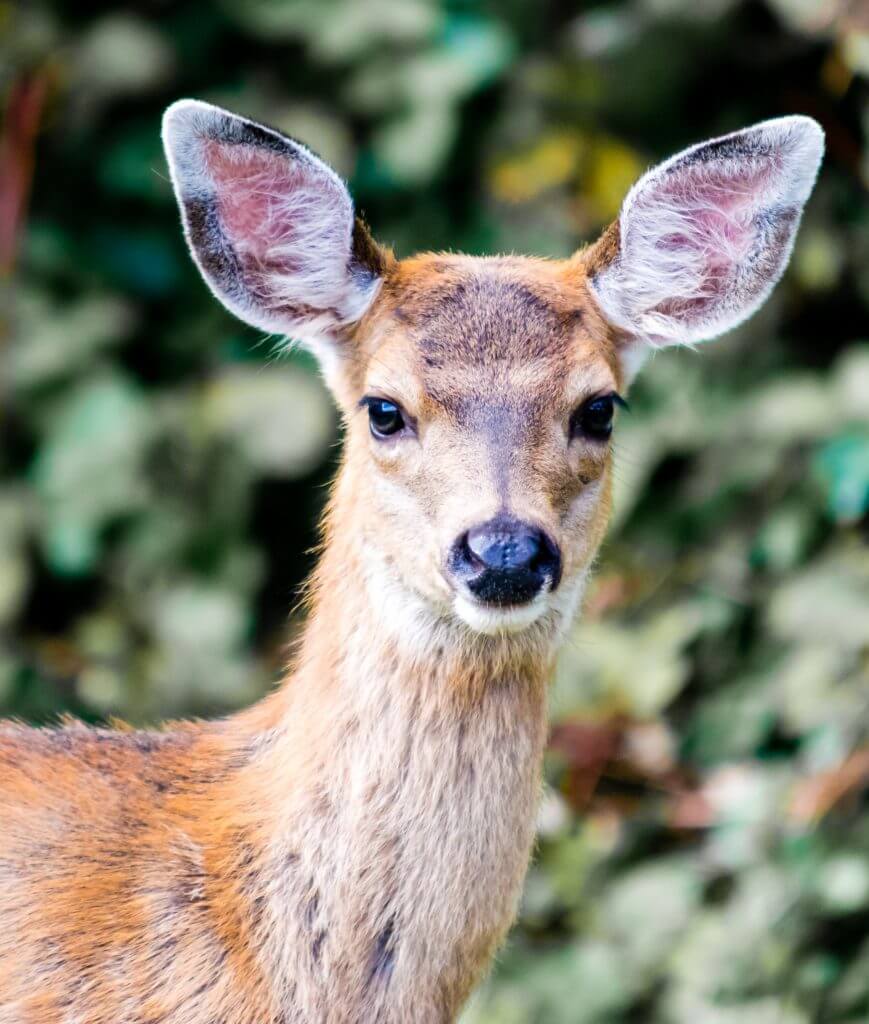
Mule deer get their name from their large ears, which reminded settlers of a mule. Their other defining feature is the “mask” on their face. Mule deer range between 3 and 3.5 feet tall and 4 to 7 feet long. They usually weigh between 130 and 280 pounds. They are actually very picky eaters: they will eat only the most nutritious foods. This means they have more robust requirements for foraging and fewer places to live.
Pronghorn Antelope
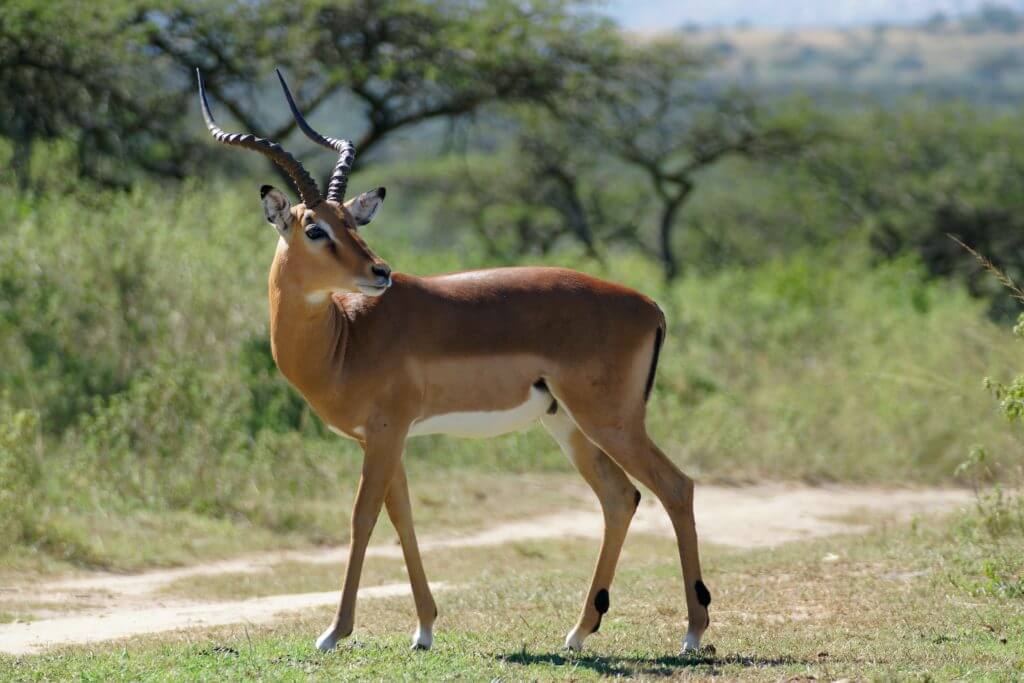
Pronghorn Antelope are easily identifiable by their horns, as shown in the picture above. They are remarkably agile, and can reach speeds of nearly 60 miles per hour. Pronghorns also have excellent vision, which allows them to spot predators from further away on their long migrations. They will eat grasses shrubs and most other greenery, and they seldom drink water since they get all the water they need from the plants they eat. If you’d like to know more, go here.
White Tailed Deer
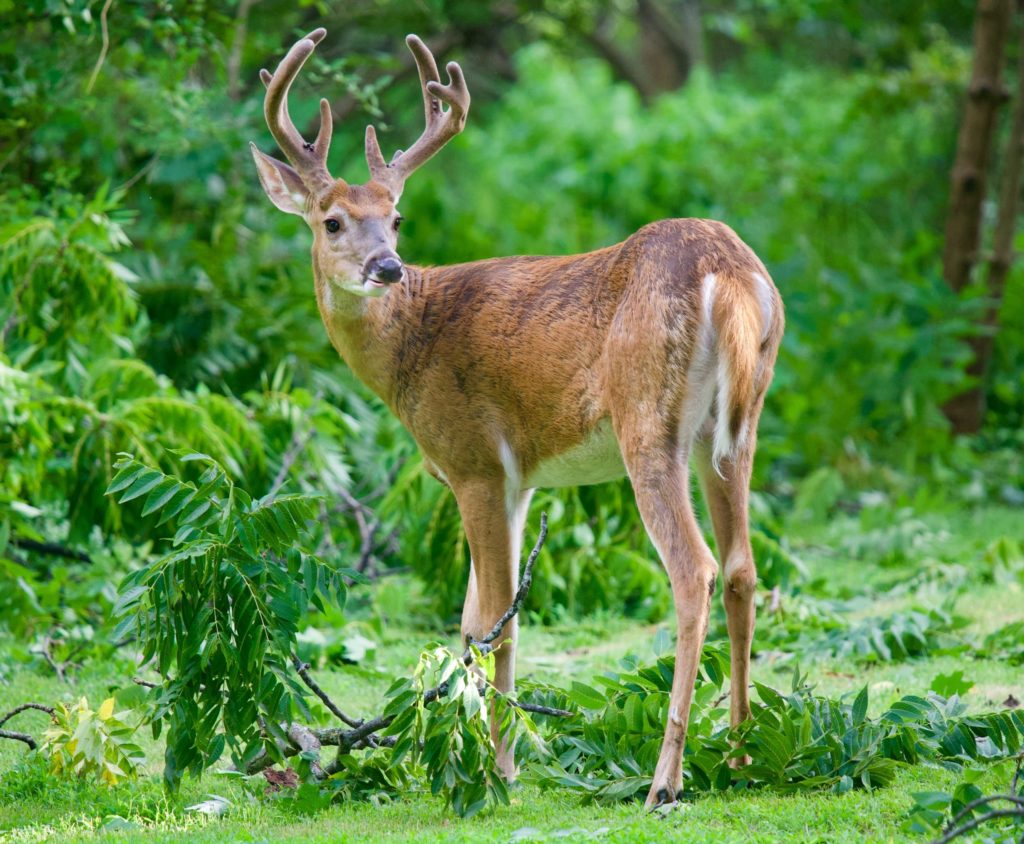
White Tailed Deer are the smallest member of the deer family. They live throughout most of the Rocky Mountains, Arizona and most of Mexico. White Tailed Deer stand almost 3 feet tall and can weigh up to 300 pounds. Males grow antlers as seen in the photograph above and when frightened they raise their tail to signal other deer that danger is near by. More information on White Tailed Deer can be found here.
Beaver
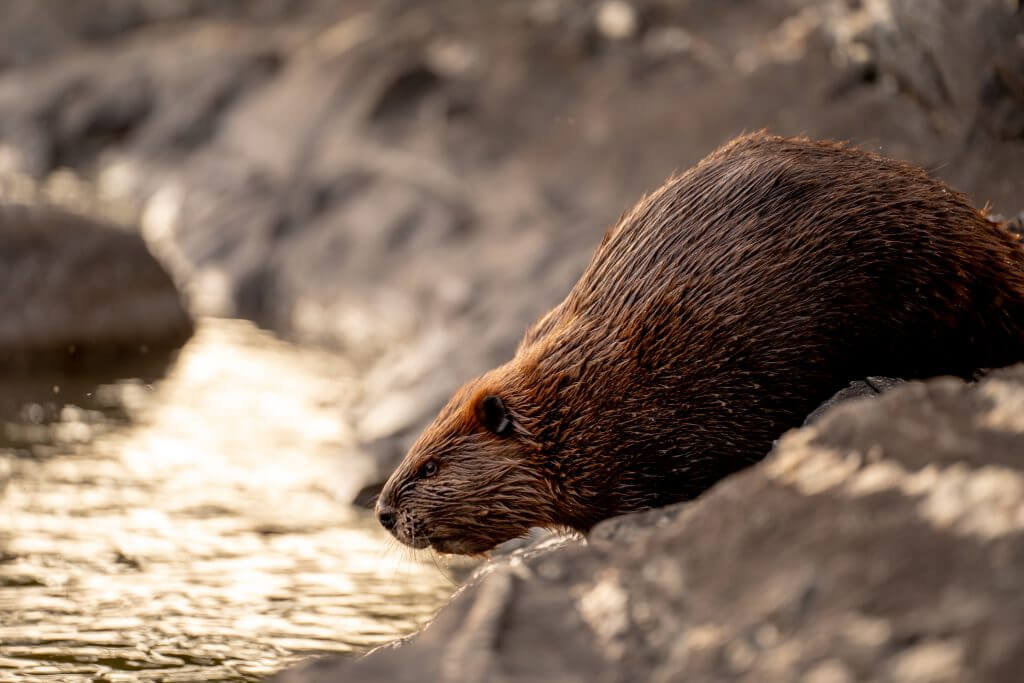
The American Beaver is the largest rodent in America. The distinguishing feature of the beaver is it’s long flat tail, which it uses to navigate more easily in the water. It also uses its tail to raise the alarm when there is danger by slapping the water. The Beaver builds dams by chewing down trees or chewing through branches to build their homes. Their teeth are always growing, so chewing on trees prevents their teeth from getting too long. Find out more here!
Chipmunks
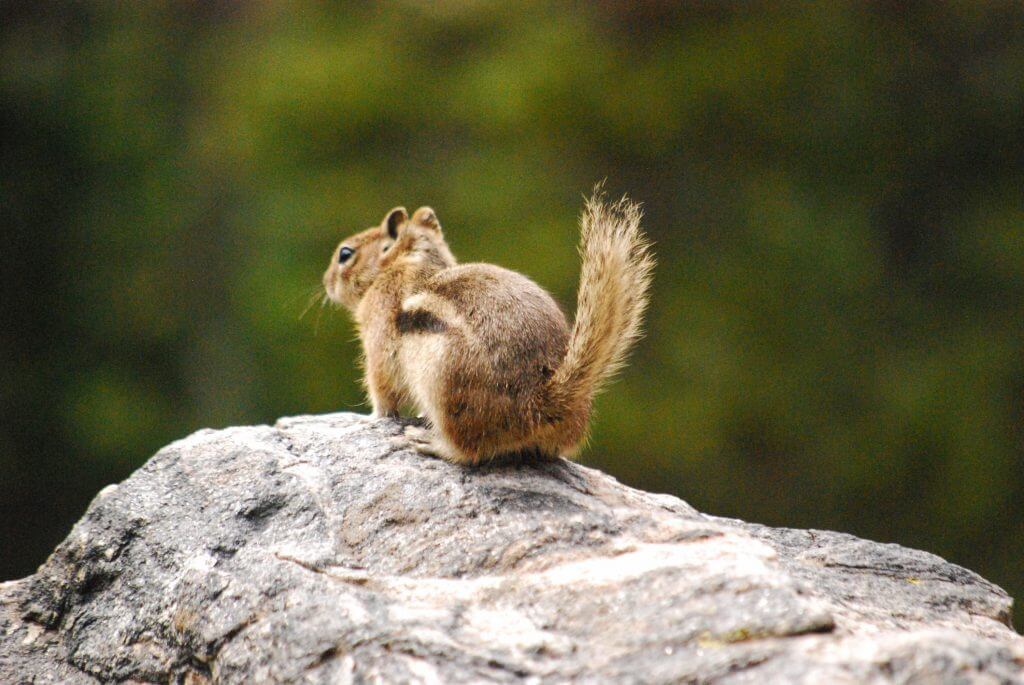
Chipmunks are rodents that can often be seen playing, fighting for food and generally scampering around the Yellowstone area. They are small and striped, and they hoard food in preparation for winter. This makes them an important part of the ecosystem because it moves seeds around for plants and trees. They are also an important source of food for predators, such as foxes and coyotes. Information on Chipmunks can be found here.
Yellow Bellied Marmots
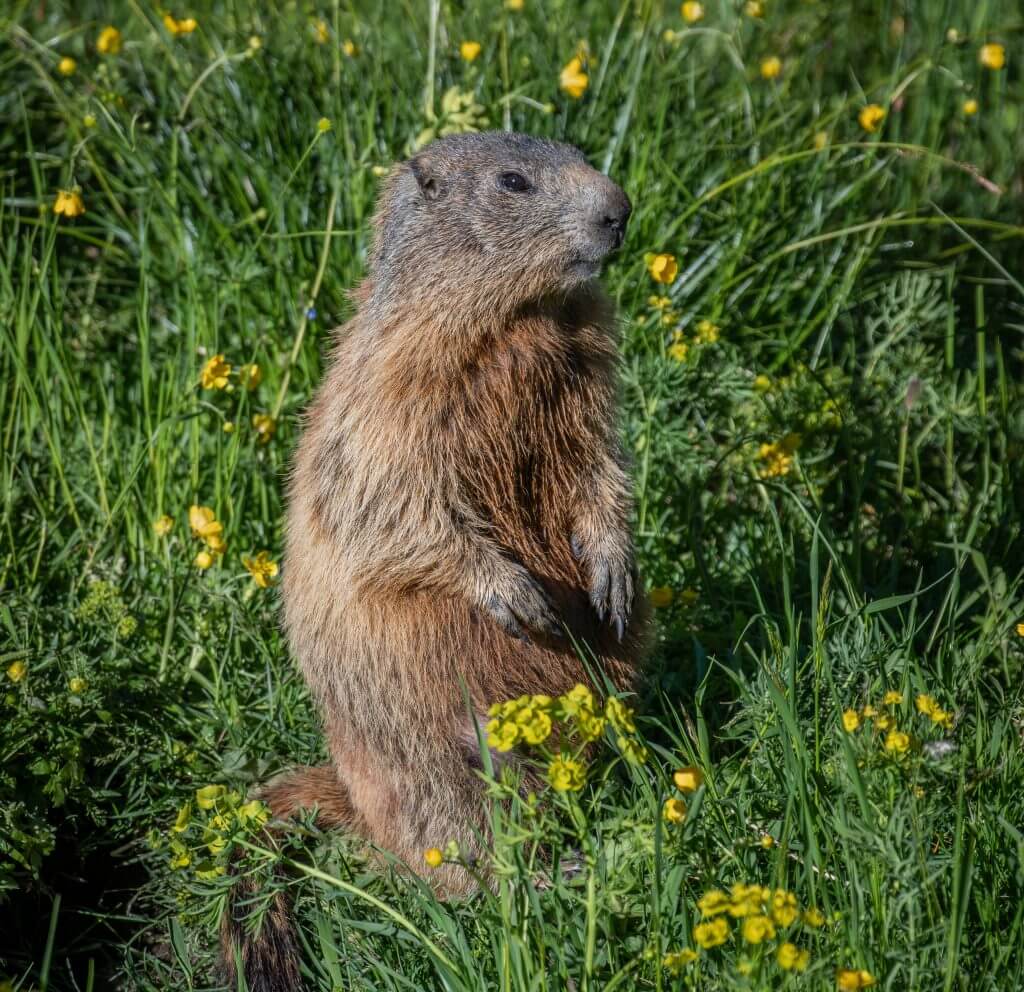
Yellow bellied marmots are also called Rock Chucks and are a member of the ground squirrel family. They are found across the mountainous areas of Canada and the Western United States. Marmots are typically brown in color and weigh about 11 pounds. They are very common and not considered to be under threat. They like to poke their heads out of their burrows and look at anything they are curious about that might be passing by. If you’d like to learn more this is a good place to start.
Red Squirrels
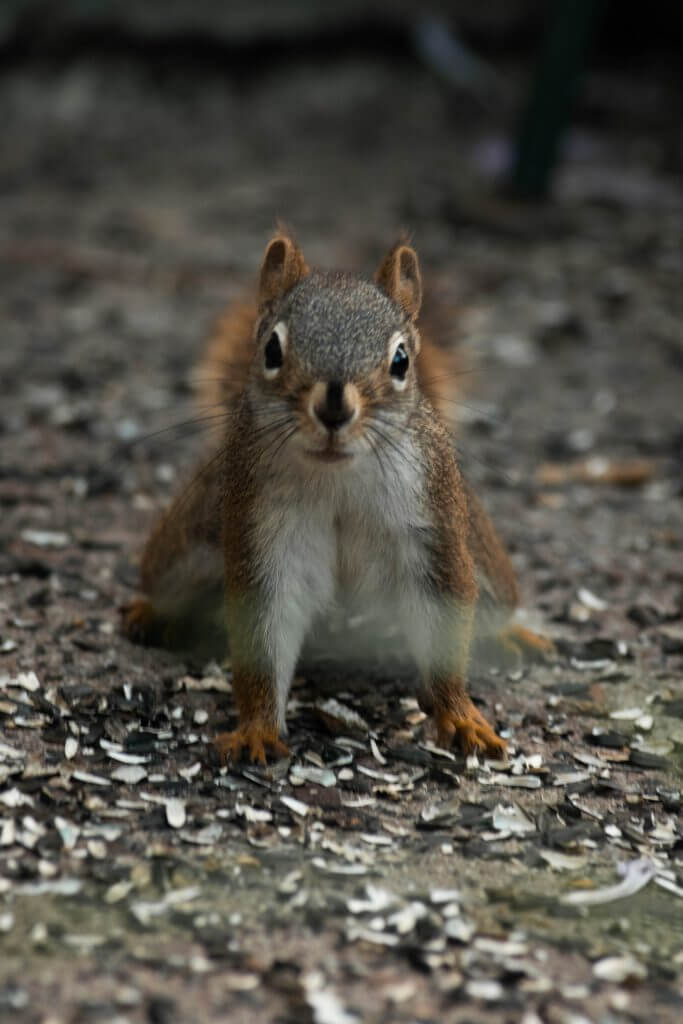
While Red Squirrels may be very common they are also very cute! The are another animal that hoards nuts and berries leading up to the winter months and are therefore important for the life cycles of trees and other plants. They also serve as prey for most ground predators and even some larger birds. They can be fearless around humans when they live in cities and towns, and their habitat crosses readily into areas with large human populations. For more information about squirrels, here is a good place to start.
Bats

Yellowstone is home to 13 varieties of bats, and all eat insects and are active at night. Unfortunately, due to a fungal infection, many of the bats populations are falling. Several species of bats have become extinct, and the other cannot recover quickly because they raise only 1 pup per female per year. If you see a bat, don’t be scared! Instead, thank them for controlling the insect population and leave it in peace so the population can rise. To learn more about bats, you can go here or here.
While this may seem like an extensive list, there are many more animals to see in Yellowstone Park! Go to Yellowstone National Park’s Website to learn more.

